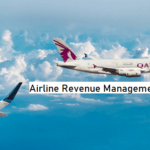Fleet tracking gives actionable intelligence to overcome business challenges. It helps streamline processes across various departments by automating them.
In addition to being able to track and monitor the vehicle, paperwork such as timesheets, fuel tax reports, billing and HOS(Hours of Service) can be generated using fleet tracking software.

This software is customized to suit a particular business’ needs in order for the fleet to work at maximum efficiency. In case of businesses that provide services at the clients location, this software can be customized accordingly to act as a dispatching software. Here’s how it helps lower operational costs and increase productivity.
1] Reduce Fuel Costs and Better Time Management
Using a fleet tracking software helps save on fuel cost by assigning better routes that are both time and fuel efficient. This allows the driver to complete more trips and save fuel.
The GPS device gives an accurate reading on the fuel levels, mileage, engine health and lots more. This data can be used along with a dispatching software to generate bills .
By automating most processes, both the driver and the fleet manager are able to take up more tasks and focus on areas that need focus. The data recorded by the ELD can also be used to generate various reports such as IFTA reports, Fuel tax reports, road tax reports, as well as automate payroll.
2] Auto-maintenance and Engine Diagnostics
The GPS device, when connected to the onboard processor of the vehicle through the OBD/JBUS port of the vehicle, can access and monitor the engine’s health. It sends out timely alerts when the vehicle is due for maintenance and also sends out an alert to the fleet manager in case of vehicle breakdown.
This is a preemptive measure to avoid additional expenses such as towing charges and repairs. By ensuring the vehicle is well maintained the fleet complies with the safety regulations set by the FMCSA. This is very crucial for a business as they require good CSA scores to avoid penalties.
3] Safety and Security
By tracking the fleet via GPS, fleet managers know where the vehicles are at any given time reducing the chances of theft and unauthorized use of vehicles. As the vehicles are being constantly monitored the fleet manager would be able to assess situations and make decisions accordingly.
The driver and the fleet manager are regularly updated on weather and road conditions. This keeps them well informed and effectively lowers risk of accidents. Fleet managers are able to keep an eye on driving, speed and braking habits of the driverl, making it easier for them to provide appropriate feedback and ensure safety.
![]()
The GPS tracker sends out periodic signals with its location even when the ignition is turned off. And by using a fleet tracking software the fleet manager would be alerted if there is any change. Businesses lose a lot of money due to cases such as theft and accidents. This can be avoided by tracking the fleet.
In addition to that some telematic solutions offer a kill switch, which when triggered can stop the vehicle from moving. This prevents the vehicle from getting any further and can easily be tracked down.
4] Claiming Insurance
In case of theft and accidents, the fleet manager can always track the location of the vehicle and get a clear idea of the situation.
Based on the reports generated by the device and video footage from the dashcam, the fleet manager can always review the tape and take a call. The video footage is considered reliable evidence and can be used to support claims.
5] Billing, Reporting and Payroll
The fleet tracking software can be customized to function as a dispatch software, where the system automatically assigns tasks to drivers, taking into consideration fuel costs, time and the next location. The data fed by the software can be compiled into various reports and bills.
Billing is automated by taking into consideration HOS, service fees, distance travelled and fuel costs. Similarly, attendance and timesheets can also be processed digitally and instantly, making them accurate and extremely time efficient. By compiling all this data it makes it very easy to automate payroll.
With such a system in place, transparency is ensured, which is vital for a business to run smoothly. It also encourages drivers to adopt good behaviour and ethics, as they get rewarded appropriately for it. Businesses that have a fleet depend on their drivers and fleet manager for their success.
6] Driver Rewards Programme
Drivers are the cornerstone for any business with a fleet, so it is very important to ensure that they are well compensated and have the job satisfaction. In order to do this, a rewards programme can be set up, which helps motivate the drivers to follow safety standards and perform better.
Using the data gathered by the telematic tools, the fleet manager is able to compile all of this into reports that show the top drivers and the ones who need improvement. Drivers are rewarded in the form of vouchers or cash. This programme is a very useful initiative that can be used to retain the best drivers.
It is a well known fact that hiring good drivers is a very tedious task and it consumes a lot of time and resources. So bearing this in mind the most effective way to maintain a fleet is to retain it’s best drivers and encourage them to give their best.
Join 25,000+ smart readers—don’t miss out!







